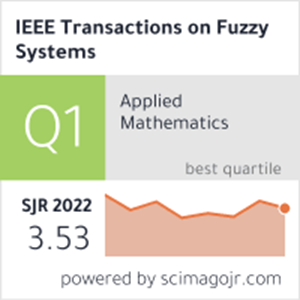将间接偏好纳入缺失值的有序回归估计与共识达成
IF 11.9
1区 计算机科学
Q1 COMPUTER SCIENCE, ARTIFICIAL INTELLIGENCE
引用次数: 0
摘要
在群体决策情境中,外部环境和个人经验的约束会阻碍决策者提供完全模糊的偏好关系。个人不同偏好的冲突阻碍了达成共识的努力。针对这些挑战,传统方法通常将模糊偏好关系的完成和共识的达成作为两个独立的部分,通过迭代过程提高一致性水平。但是,这种方法会影响达成协商一致意见的效率。此外,现有的研究利用有限的已知客观信息来填补缺失的价值,而忽略了对决策者认知能力较低的间接偏好的挖掘。因此,决策结果的可信度大大降低。本文通过对间接偏好的整合,引入了一种同时完成模糊偏好关系完成和共识达成的共识框架。在此框架中,首先构造了一个有序回归一致性判别模型来评估信息集的相容性。随后,为了准确识别和管理冲突信息,考虑最小成本消除共识模型和最小成本调整共识模型,设计了冲突反馈机制。我们提出的方法不仅深入挖掘了决策者的隐性偏好,而且实现了缺失值预测、共识达成和加性一致性实现三个目标的集成。它避免了多次一致性迭代和扭曲,同时提高了估计值的可靠性和达成共识的效率。最后,通过案例分析、敏感性分析和对比分析验证了所提方法的有效性。本文章由计算机程序翻译,如有差异,请以英文原文为准。
Integrating Indirect Preferences Into Ordinal Regression Estimation of Missing Values and Consensus Reaching
Constraints from the external environment and personal experiences may hinder decision makers from offering complete fuzzy preference relations in situations of group decision making. Conflicts in individual different preferences impede any effort of reaching consensus. Addressing such challenges, traditional methods typically isolate fuzzy preference relation completion and consensus reaching as two separate parts, while improving consistency level through iterative processes. However, such an approach affects the efficiency of consensus achievement. Furthermore, existing studies utilize limited known objective information for filling missing values, while neglecting the excavation of indirect preferences that requires lower cognitive capacity from decision makers. Consequently, the credibility of decision results is greatly reduced. Through integrating indirect preferences, this article introduces a consensus framework that concurrently accomplishes fuzzy preference relation completion and consensus reaching. In the framework, an ordinal regression consensus discriminant model is constructed to first assess the compatibility of information sets. Subsequently, to accurately identify and manage conflicting information, we design a conflict feedback mechanism by considering the minimum cost elimination consensus model and the minimum cost adjustment consensus model. Our proposed method not only deeply explores decision makers’ implicit preferences, but also achieves the integration of three goals: missing value prediction, consensus reaching, and additive consistency realization. It avoids multiple consistency iterations and distortions, while enhancing the reliability of estimated values and the efficiency of consensus reaching. Finally, the validity of the proposed method is demonstrated through case analysis, sensitivity analysis, and comparative analysis.
求助全文
通过发布文献求助,成功后即可免费获取论文全文。
去求助
来源期刊

IEEE Transactions on Fuzzy Systems
工程技术-工程:电子与电气
CiteScore
20.50
自引率
13.40%
发文量
517
审稿时长
3.0 months
期刊介绍:
The IEEE Transactions on Fuzzy Systems is a scholarly journal that focuses on the theory, design, and application of fuzzy systems. It aims to publish high-quality technical papers that contribute significant technical knowledge and exploratory developments in the field of fuzzy systems. The journal particularly emphasizes engineering systems and scientific applications. In addition to research articles, the Transactions also includes a letters section featuring current information, comments, and rebuttals related to published papers.
 求助内容:
求助内容: 应助结果提醒方式:
应助结果提醒方式:


